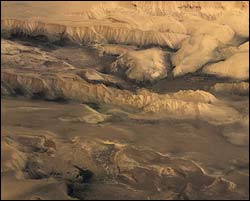This area deals with the fundamental laws and building blocks of nature and how they interact, the properties and the behavior of matter, and research into space and time and their structures.
innovations-report provides in-depth reports and articles on subjects such as astrophysics, laser technologies, nuclear, quantum, particle and solid-state physics, nanotechnologies, planetary research and findings (Mars, Venus) and developments related to the Hubble Telescope.

Weight limits for biggest black holes confirmed
The very largest black holes reach a certain point and then grow no more. That’s according to the best survey to date of black holes made with NASA’s Chandra X-ray Observatory. Scientists also discovered previously hidden black holes well below their weight limit. These new results corroborate recent theoretical work about how black holes and galaxies grow. The biggest black holes, those with at least 100 million times th

Just as the static on an AM radio grows louder with the approach of a summer lightning storm, strong radio emissions accompany bright auroral spots — similar to Earth’s northern lights — on the planet Saturn, according to a research paper published in the Thursday, Feb. 17 issue of the journal Nature.
William Kurth, research scientist in the University of Iowa College of Liberal Arts and Sciences Department of Physics and Astronomy, says that the data was collected in early

Secrets of Saturn’s polar light show unveiled by BU-led team of astronomers
Aurora on Saturn behave in ways different from how scientists have thought possible for the last 25 years, according to new research by a team of astronomers led by John Clarke, a professor in BU’s Department of Astronomy and in the department’s Center for Space Physics. The team’s findings have overturned theories about how Saturn’s magnetosphere behaves and how its aurora are

After reaching its observational orbit around Mars a year ago, ESA’s Mars Express has already delivered an avalanche of scientific data of unprecedented quality that have completely changed the way in which we think about the Red Planet.
In order to compare views and discuss the implications of the new discoveries, over two hundred scientists will be attending the first Mars Express science conference, taking place from 21 to 25 February at ESA’s European Space Research and T

Visiting the Earth and Space Expo in Brussels is like nowhere else on Earth – you even take what seems like a walk through the sky to get inside! During the weekend upwards of 9000 visitors made the journey to experience a wide range of displays, interactive exhibits and breathtaking space-based views of our planet.
Those entering the Expo, at Autoworld in the Parc du Cinquantenaire, find that carefully placed mirrors on the floor, walls and ceiling give a sense of spacewalking

These images, taken by the High Resolution Stereo Camera (HRSC) on board ESA’s Mars Express spacecraft, show the central part of the 4000-kilometre long Valles Marineris canyon on Mars.
The HRSC obtained these images during during orbits 334 and 360 with a resolution of approximately 21 metres per pixel for the earlier orbit and 30 metres per pixel for the latter.
The scenes show an area of approximately 300 by 600 kilometres and are taken from an image mosaic that was